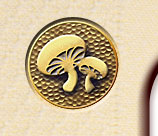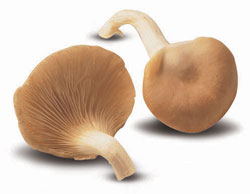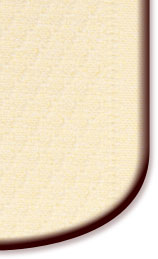


Pleurotus ostreatus,
P. sapidus, P. pulmonarius,
P. citrino-pileatus, and many more
Preparation and Serving Suggestions:
Rinse or brush lightly. Sauté or stir fry in oil or butter. Great in pasta dishes, meat dishes, omelets, and soups.

Oyster mushrooms comprise a long list of different Pleurotus species and are available in an amazing array of colors and sizes. They have a texture much like their seafood namesake, with a mild pleasant taste.
Reported Health Benefits:
Oyster mushrooms are best known medically for their cardiovascular and cholesterol-controlling benefits. Oyster mushrooms contain mevinolin and related compounds which are potent competitive inhibitors of HMG CoA reductase (3-hydroxy-3-methyl-glutaryl coenzyme A reductuctase), the major rate limiting enzyme in cholesterol biosynthesis. In addition, they have been shown to have activity in the following:
* Antitumor
* Immune response
* Anti-inflammatory
* Antiviral
* Antibiotic
Selected References:
Actual Reviews for Selected Medicinal Properties of Mushrooms. Cholesterol-Lowering Effect of Pleurotus Species (Agaricomycetideae) (Abstracts of papers published in 1991-1999). 1999. Int J of Med Mushrooms. Vol. 1(4) :371-380
Arigoni,. A. 1982. Studies on terpene biosynthesis; production of the antibiotic pleurotin. Abstr Pap m Chem Soc, 184 Meet.
Babitskatya, V.G., et al. 1999. Some Biologically Active Substances from Medicinal Mushroom Pleurotus ostreatus (Jacq.:Fr.)P.Kumm.(Agaricomycetideae). Int J of Med Mushrooms. Vol. 1(4) :345-349
Bajaj, M., et al. 1997. Role of oyster mushroom (Pleurotus florida) as hypocholesterolemic-antiatherogenic agent. J Exper Biol, 35(10), 1070-1075
Bobek, P., et al, 1991. Cholesterol lowering effect of the mushroom Pleurotus ostreatus in hereditary hypercholesterolemic rats. Ann Nutr Metab 35(4):191-195
Bobek, P., et al. 1998. Dose and time dependent hypocholesterolemic effect of oyster mushroom (Pleurotus ostreatus) in rats. Nutrition 14(3):282-286
Gunde-Cimerman,. N. 1999. Medicinal value of the genus Pleurotus (Fr.) P. Darst. (Agaricales s.l., Basidiomycetes). Int J of Med Mushrooms. Vol. 1(1):69-80
Guzman, G.. 2000. Genus Pleurotus (Jacq.:Fr.) P. Kumm. (Agaricomycetideae): Diversity, Taxonomic Problems, and Cultural and Traditional Medicinal Uses. Int J of Med Mushrooms. Vol. 2(2) :95-123
Gunde-Cimerman, N., and Plemenitas, A. 2001. Hyporcholesterolemic Activity of the Genus Pleurotus (Fr.) Karst. (Agaricales s.l., Basidiomycetes). Perspectives of Medicinal Mushrooms in Healthcare and Nutrition in the 21st Century. 12-14 Septemeber Kiev, Ukraine. Abstract in International Journal of Medicinal Mushrooms 3(2-3). Pg. 91.
Kurashige, S., et al. 1997. Effects Lentinus edodes, Grifola frondosa and Pleurotus ostreatus administration on cancer outbreak and activities of macrophages and lymphocytes in mice treated with a carcinogen, N-butyl N-butanolnitrosamine. Immunopharmacol Immunotoxicol, 19(2), 175-183
Noda-Shokkin. 1998. A preparation for kidney treatment possessing antiinflammatory activity, obtained from Basidomycetes, e.g. Lentinus, Pleurotus, Flammulina,and Tricholoma. Patent JPJ 61171428 (1986) JP 85-11888 (1985)
Wasser, S. P. and A. L. Weis. 1999. Medicinal properties of substances occurring in higher basidiomycetes mushrooms. Int J of Med Mushrooms.Vol. 1(1):31-62
© Copyright 2005 Phillips Mushroom Farms, Inc.